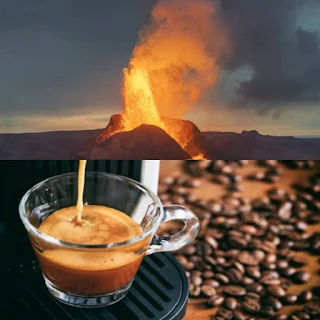Scientists have warned that some of the most dangerous volcanoes in the world are not adequately studied, making it difficult to predict the extent of their eruption or when they might erupt.
The Cascade arc extends from northern California in the United States to British Columbia in Canada, and includes more than a dozen volcanoes, 11 of which are classified by the US Geological Survey, including Mount Baker and Mount Hood. It is classified as a "very high threat", meaning it poses significant risks to people and infrastructure.
Despite the potential for great danger, scientists have little data regarding where magma is stored beneath the Cascade Arc, knowledge that could help scientists better understand and predict future eruptions.
Predicting an eruption is still far from an exact science, as different volcanoes exhibit different behaviors before erupting and, in some cases, give little warning.
A key aspect of predicting eruptions is the size, location and flow of magma beneath the volcano, something scientists say is missing in the Cascade Arc region.
“The Cascade Arc contains a number of large volcanoes that pose a significant risk to population and infrastructure, for example Mount St. Helens and Mount Rainier,” a team led by Associate Professor Penny Weiser said in the journal Geochemistry, Geophysics, Geosystems. “Until now, there has been no extensive review "The range of where magma (molten rock) is stored in the Earth's crust beneath these volcanoes, although understanding where magma is stored is very important to help monitor unrest at these volcanoes and predict future activity."
In 1980, a devastating eruption from Mount St. Helens in Washington state killed 57 people. However, the behavior of this volcano is fairly well understood, so future eruptions can be predicted.
There are a number of other volcanoes in the Cascade Arc near populated areas and pose a major danger to people, but the team found that they are very poorly understood.
He explained: “We compiled all available data on magma storage for each volcano, and found that many volcanoes had very few studies looking at them, despite the risks they pose to society.”
Seismic data, inclinometer readings, and information from satellites can reveal ground deformations that indicate magma is moving beneath the surface. However, most research focuses on a few cascade volcanoes that are already well described.
Practical limitations can also hinder scientists' understanding of volcanoes. Sometimes the magma does not move enough to be detected, and other times, noise from various geological processes (including earthquakes caused by faults) reduces the signal from the magma.
The team admits that due to factors including inaccessible terrain and snow and ice cover, the cost and difficulty of setting up monitoring networks in wilderness areas has hampered data collection, but they say understanding the depth of magma storage is crucial to interpreting signs of future eruptions.
Learn the secret to making the perfect espresso!
Researchers believe they have identified the secret ingredient to making the perfect espresso, and said that adding a small amount of water to the coffee beans before grinding them produces a firmer, tastier espresso.
They revealed that during normal grinding, friction between coffee beans generates electricity that causes the particles to gather together and stick to the grinder.
The researchers explained that adding a humidifying element reduces the amount of electricity produced, which means less coffee is wasted and the flavors become much stronger.
“Moisture, whether it is remaining inside the roasted coffee or external moisture added during grinding, is what determines the amount of charge that is formed during the grinding process,” said Christopher Hendon, an associate professor of computational materials chemistry at the University of Oregon in the US. “Water not only reduces static electricity; "But it can also have a significant impact on the density of the drink, and perhaps the ability to achieve higher concentrations of preferred flavours."
In the study, published in the journal Matter, the researchers wanted to investigate how the electricity produced during the grinding process affects the taste of coffee.
They collaborated with volcanologists, who study similar electrification processes that occur in volcanic eruptions.
“During the eruption, the magma splits into lots of small particles that then come out of the volcano in the form of a huge column,” said Joshua Mendez-Harper, an assistant professor of electrical and computer engineering at Portland State University in the US. “And throughout that, these particles are rubbing against each other.” "It's charged to the point of producing lightning. In a simple way, it's like grinding coffee, where you take these beans and turn them into a fine powder."
The team measured the amount of static electricity produced when grinding different types of coffee beans, noting the country of origin.
They also took into account the processing methods of the beans, including whether they were natural, washed or decaf.
The researchers said that the electricity produced during grinding was not affected by the source of the coffee or how it was processed, but there was a correlation between the electricity, the color of the roast, and how rough or fine the particles were.
They revealed that light roasting produced a lower charge, and this charge was more likely to be positive, while dark roasting was negatively charged and produced a greater total charge.
The researchers also found that dark roasted coffee produces much finer particles than light roasted coffee.
They then tested whether grinding with water changed the way the espresso was brewed.
They found that when the grains were ground with a little water, it resulted in a stronger drink, compared to grains ground without water.
The team said that grinding with water made espresso flavors more consistent, overcoming a major obstacle for baristas and industrial coffee brewers.
Tags:
indonesia
major issues
most dangerous volcanoes
mount baker
mount hood
science
world top dangerous volcanoes






Good
ReplyDelete